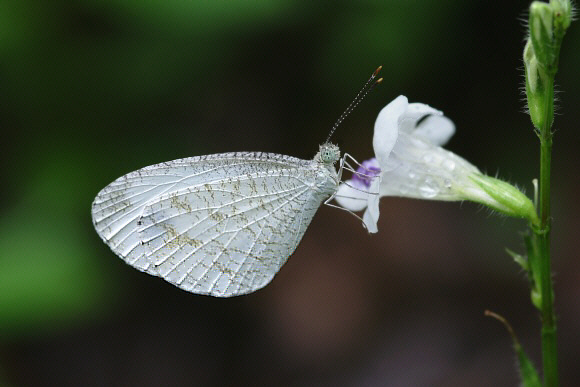
Introduction
The Psyche is also known by the delightful name Wandering Snowflake – a term which describes this common and pretty species very well. In Africa, other members of the genus are known by the equally descriptive names Flip-Flop and Wood White – but while they are similar in behaviour and appearance to the Wood Whites of Europe, the latter are of a different genus Leptidea, and are only very distantly related, being members of the subfamily Dismorphiinae.
In Roman mythology, Psyche was a beautiful girl who was visited each night in the dark by Cupid, who told her she must not try to see him. When she did try, while he was asleep, she accidentally dropped oil from her lamp on him, and he awoke and fled. After she had performed many harsh tasks set by Cupid’s mother Venus, Jupiter made her immortal, and she and Cupid were married. Her name Psyche is Greek for both “soul” and “butterfly.”
There are 8 species in the genus Leptosia, of which 7 are restricted to forested areas of Africa and ( in the case of alcesta and nupta ), Madagascar.
Leptosia nina is the only species found outside Africa. It is found in Nepal, India, Sri Lanka, Bhutan, Myanmar, Thailand, Laos, Vietnam, south China, Taiwan, the Philippines, West Malaysia, Singapore, Sumatra, Borneo, Java and Timor.
Habitats
This is a butterfly of open but sheltered grassy places, including clearings in primary and secondary forest, plantations, roadsides, parks, gardens, quarries, railways and waste land. It is found at elevations from sea level to at least 1500 metres in the Himalayan foothills.
Lifecycle
The eggs are spindle-shaped, ribbed, pale green in colour, and laid singly on young terminal leaves of the foodplants.
The caterpillar is green, glaucous and covered in short setae. It feeds on various members of the Capparidaceae, primarily Capparis, Cleome, Crateva and Polanisia.
The chrysalis is shaped like that of Eurema and Gonepteryx. It has a buff or pale brown thorax and abdomen, and pinkish wing cases. It is suspended from the underside of a leaf, attached by the cremaster and secured with a thin silken girdle.
Adult behaviour
Although they are only distantly related, the flight and general behaviour of the Psyche is strongly reminiscent of that of the European Leptidea Wood Whites ( subfamily Dismorphiinae ). The flight is feeble and erratic, bobbing up and down as they slowly and persistently flutter over the grasses, rarely ascending above knee level. I have watched individuals spend over 10 minutes flying in this manner, without ever pausing to settle.
The butterflies are active mainly in early morning and again at dusk, preferring to fly when light levels and temperatures are quite low. They also tend to be more prevalent in humid conditions, and will fly in light rain on overcast days.
Both sexes commonly visit Vernonia and Asystasia flowers for nectar, and on dull days can often be found at roost on the flower heads. Males are sometimes seen imbibing dissolved minerals from mud or from bird droppings.
